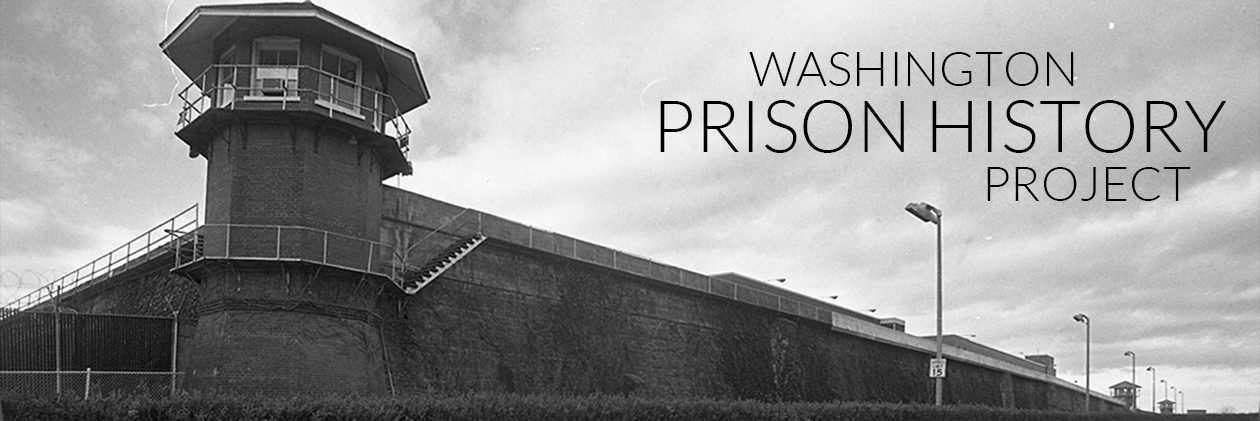Concrete Mama was published in 1981, before photos were scanned and edited digitally. In republishing the book, the University of Washington Press and the Washington Prison History Project received all of Ethan Hoffman’s original negatives from the Washington State Penitentiary. Panda Lab, a custom photo lab dedicated to photographic restoration and the fine art of photography, scanned and edited Hoffman’s negatives. Panda Lab co-founder Dana Drake reflects on Hoffman’s original photographs and the work of restoring them for a modern audience.
Restoring the Photos of Concrete Mama
by Dana Drake
Panda Photographic Laboratories
To most readers Concrete Mama will offer a rare, intimate view of a small segment of the world of criminal incarceration—presented in a familiar documentary style. Until the digital age, photographs captured under harsh, ill-lit conditions on relatively insensitive films with small-format cameras frequently had a distinctly harsh, high contrast look. Anybody familiar with the documentary work of the great photographers of Life and Look magazines knows the style well.
The original Concrete Mama was reproduced from photographic prints, each carefully crafted by the photographer to be stylistically consistent with the others. Even when the photographer made them, no two of his own prints of the same subject would ever be absolutely identical because the darkroom printing process is in some measure organic. There are variables in judgment and timing and materials and environment that affect the way a print may ultimately look. Each print represents the outcome of a little ritual involving an enlarger, erratic timers, successive exposures, waving hands and wands in a stream of photons, dipping sensitized papers into toxic solutions, and sometimes waiting for hours to see whether efforts will be rewarded with the desired outcome. The process is affected by degree of caffeine levels, fatigue, background music, and interruptions. Sometimes after prints were “finished” and dry, the photographer might work select local areas with bleach solutions such as potassium ferricyanide in order to bring faces or other features from the shadows. The resulting images are dramatic and emotionally evocative.
The easy way to reproduce a new version of the book would be to use the original unique prints. Because they were not available, the best alternative was to work from the original image capture source, the negatives. Darkroom printing is no longer an option for these negatives. The high contrast papers are not available. The cost would be prohibitive. And, most importantly, the photographer himself is likely the only person who could come close to replicating some of the images.
My role in the process of resurrecting Concrete Mama was in producing digital images from the negatives. I scanned the film and made initial adjustments to the image files, attempting to maintain the spirit and style of the original publication prints. Sometimes I was able to come pretty close the look of an original image with minimal adjustment. A significant number of images showed the distinctive, organic imprint of the photographer’s darkroom magic and could not be replicated exactly. Mary Fleenor, also at Panda Lab, applied her own skills to working some particularly difficult images. We were both impressed with the significant efforts that had gone into the original prints. The photographer’s style works in service of the subject. At times we were surprised at the degree of manipulation he had applied to enhance a print. We hope we got close enough to convey the photographer’s artistic intentions. He gave us memorable images to work with.
A fair representative digital image can be derived from the photographer’s original negative with a dedicated film scanner and minimal manipulation. To grasp the measure of craft applied to Ethan’s images, it’s imperative that the basic scan be compared side-by-side to the final images submitted for the Concrete Mama reissue. We had a copy of the original book as a guide. We knew the nature of the original prints and we knew Ethan’s starting point, the original negatives in our hands. A couple of examples will help.
Chapter Four, page 58 of the original book features a shot of a motorcyclist riding a well-worn, dusty track inside the prison walls. As interesting as the original image may be, it’s far less dramatic than Ethan’s final print which we’ve tried to replicate.

Before 
After
There are similar transformations in evidence throughout the work. Another illustrative shot is found on page 131 of Chapter Eight of the original book. Our basic scan accurately represents the scene. The final image demands that the viewer’s attention be directed to the most important part of that scene.

Before 
After
The “before” and “after” versions of both shots demonstrate the skill of the photographer in using darkroom techniques to enhance, reveal, and emphasize elements of the original composition.
It has been a pleasure to have a part in bringing Concrete Mama to a new set of readers.
« Back to CONCRETE MAMA

You must be logged in to post a comment.